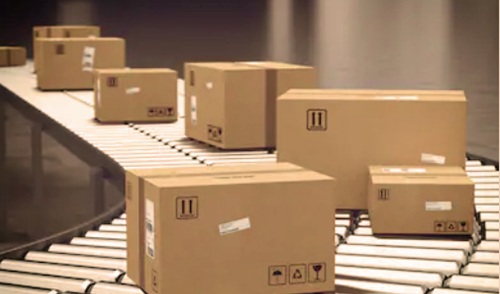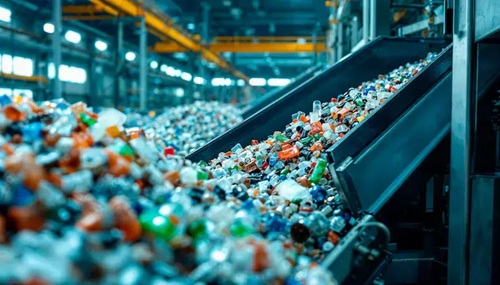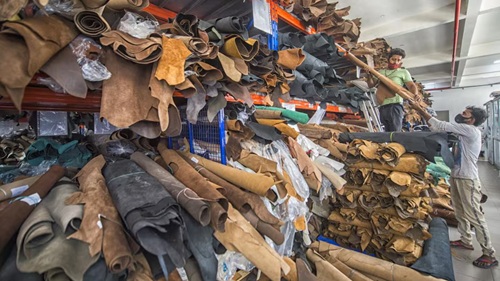The packaging industry in India has transformed dramatically over the past decade, becoming one of the most dynamic and rapidly growing sectors in the country. In 2025, it stands as a $80+ billion industry, fueled by e-commerce expansion, sustainability trends, and advancements in material science. From traditional corrugated boxes to intelligent, eco-friendly packaging solutions, India’s packaging sector is reinventing itself to meet both consumer expectations and environmental goals.
Packaging today is no longer just about product protection — it’s a strategic marketing tool, a sustainability statement, and a driver of brand identity. With rising consumption, digital retail, and global trade, the Indian packaging industry is poised for strong, sustainable growth.

Overview of the Packaging Industry in 2025
India’s packaging industry is among the top five fastest-growing markets in the world. As of 2025, the sector is valued at around USD 81–83 billion, growing at a CAGR of nearly 9–10%.
The industry spans several segments — flexible packaging, rigid plastics, paper-based packaging, metal cans, and glass packaging — each evolving with new consumer habits and technological innovation.
The country’s rapid urbanization, rising middle class, and e-commerce penetration are driving demand for innovative, cost-effective, and sustainable packaging. According to industry reports, India’s per capita packaging consumption has increased from 8.6 kg in 2010 to 22 kg in 2025, highlighting massive growth potential.
Key Growth Drivers in 2025
1. E-commerce and Digital Retail Boom
E-commerce continues to be a major force shaping the packaging landscape. Companies like Amazon, Flipkart, Meesho, and Blinkit have revolutionized how Indians shop, leading to a surge in demand for protective, lightweight, and eco-friendly packaging.
In 2025, e-commerce packaging accounts for nearly 20% of total demand, with growing emphasis on recyclability, brand customization, and unboxing experiences. Corrugated boxes, bubble mailers, and paper-based fillers are increasingly replacing plastic-based solutions.
2. Sustainability and Green Packaging
With growing environmental awareness and stricter government regulations, sustainable packaging is no longer optional — it’s a market necessity. The Plastic Waste Management Rules (2022) and Extended Producer Responsibility (EPR) norms are pushing brands toward biodegradable, recyclable, and compostable materials.
Leading FMCG and food companies such as Nestlé, HUL, and ITC are switching to paper-based and mono-material flexible packaging. Startups are also innovating with plant-based polymers, bagasse, and biodegradable films, aligning with India’s Net Zero 2070 sustainability vision.
3. Technological Innovation
Technology is transforming the packaging industry from end to end. In 2025, automation, AI-based quality inspection, digital printing, and smart packaging (with QR codes and NFC tags) are becoming mainstream.
Smart packaging helps track product authenticity, freshness, and logistics. Meanwhile, Industry 4.0 adoption in manufacturing has improved precision, reduced waste, and enhanced customization.
Companies are also investing in 3D printing, co-extrusion, and barrier film technology to enhance shelf life and efficiency.
4. Food & Beverage Sector Growth
The food processing and beverage sector, accounting for nearly 55% of packaging demand, continues to drive the industry in 2025. The rise of ready-to-eat meals, frozen foods, and beverage cans has led to a growing demand for multi-layer flexible packaging and PET bottles.
With India’s organized retail sector expanding rapidly, shelf appeal and product safety have become crucial, leading to increased investment in attractive, durable, and tamper-proof packaging solutions.
5. Export Opportunities and Globalization
The global demand for cost-efficient, sustainable packaging solutions has opened export opportunities for Indian manufacturers. India’s packaging exports — especially paper-based, flexible laminates, and plastic caps — have grown significantly.
Countries in Africa, the Middle East, and Southeast Asia are key markets, given India’s competitive production costs and innovation capabilities.
Major Segments of the Industry
| Segment | Market Share (2025) | Key Applications |
| Flexible Packaging | ~40% | FMCG, food, pharma, retail |
| Rigid Plastics | ~25% | Bottles, containers, cosmetics |
| Paper & Board | ~20% | E-commerce, cartons, labeling |
| Glass & Metal | ~15% | Beverages, chemicals, healthcare |
Challenges Facing the Industry
Despite its robust growth, the packaging industry in India faces some significant challenges:
- Plastic Waste Management: Single-use plastics and recycling inefficiencies remain major concerns.
- Raw Material Costs: Volatility in crude oil and paper pulp prices affects margins.
- Infrastructure Gaps: Logistics and cold-chain limitations affect supply chain efficiency.
- Technology Investment: SMEs face hurdles in adopting automation and advanced machinery due to high initial costs.
- Regulatory Complexity: Complying with multiple state and national-level packaging regulations adds operational challenges.
Emerging Trends in 2025
- Smart Packaging: Integration of QR codes, RFID, and sensors to enhance traceability and customer engagement.
- Minimalist Design: Consumers prefer clean, simple packaging that reflects eco-conscious branding.
- Reusable Packaging Models: Subscription-based and refill packaging systems are growing among sustainable brands.
- Local Manufacturing Hubs: Government incentives under Make in India are driving regional packaging clusters.
- Pharmaceutical Packaging Boom: Demand for blister packs, tamper-evident seals, and sterile packaging is rising post-pandemic.
Future Outlook
By 2030, India’s packaging industry is projected to surpass USD 120 billion, backed by innovation, sustainability, and digital transformation. The future will be shaped by circular economy models, smart packaging technologies, and increased foreign investment.
In 2025, India’s packaging ecosystem is no longer just a support function — it’s a strategic industry powering commerce, sustainability, and innovation. With a strong regulatory push, evolving consumer demand, and rapid modernization, the packaging industry will continue to play a pivotal role in India’s manufacturing and global trade journey.

